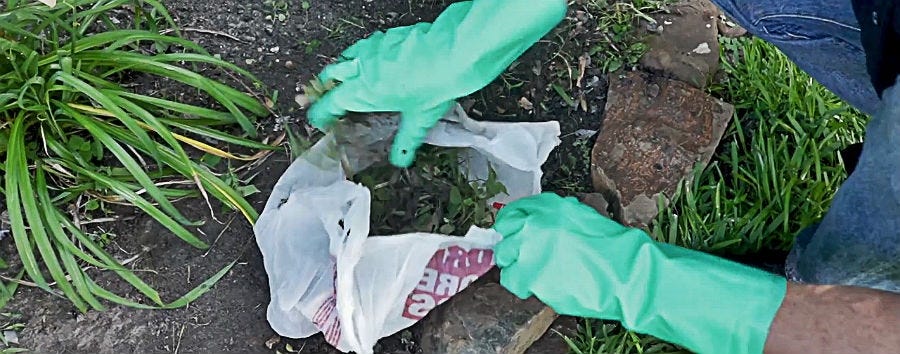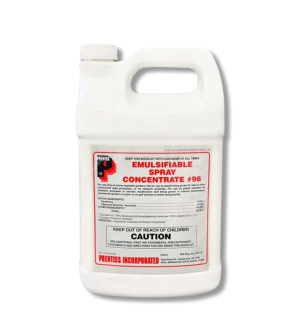Flea Beetle Control
Most Effective Products
Flea Beetle Control: How to Get Rid of Flea Beetles
This article is a general flea beetle control guide. Using the products and methods suggested will help you to completely control flea beetle infestations. Follow this DIY guide and use the recommended products and we guarantee 100% control of flea beetles.
Flea beetles are significant leaf-feeding pests affecting gardens and ornamental landscapes come spring. These pests are found all over the world and are known for their destructive plant eating habits, especially in their larvae stage. Contrary to their name, flea beetles are not fleas but a type of beetle known for its ability to jump out of sight when threatened.
While flea beetles are not a threat to the health of people or animals they are dangerous to crops and ornamental plants. They carry the bacterium, Erwinia stewartii, that causes bacterial diseases such as wilt and blight. This risk is further increased with feeding activities on the top part of the plant by the adults and its roots by the larvae.
Small infestations of flea beetles can take down new or established plants within a matter of days so it's best to remove these pests before populations rise. Flea beetles are only active for a set amount of time, but can create up to 2 generations of pests per year before overwintering into the soil. This easy to use DIY guide helps prevent and eliminate flea beetles in a quick and efficient manner with the recommended products and steps.
Identification
Before you can proceed with treatment, you will need to be certain that the pest infesting your plants is a flea beetle. Careless identification can lead you to using the wrong or ineffective insecticides, which can be a waste of your time and finances. While each species of flea beetle will vary in some of their features, they will share some distinguishing traits.

- Flea beetles are small shiny beetles, ranging between 1/16 to 1/8 inches long.
- These small insects vary in color from black, bronze, blue, brown, and metallic gray, and some species may even have stripes.
- Flea beetles have large hind legs that they use to use to jump, hence the name.
- Flea beetle larvae are white, worm-like pests with dark brown heads.
Use the image and description above to help you know what flea beetles look like when found in your yard. If unsure, then contact us through email, phone, or in-person at one of our store locations with an image or sample of the pest in a sealable plastic container. This way the pest can be properly identified and you can have the appropriate product recommendations.
Inspection
After you confirm the presence of flea beetles in your yard, you will need to inspect the area to see where infestation is most active and the conditions allowing it to thrive. This information will help you determine where to apply pesticide applications.

Where to Inspect
Flea beetle are abundant across the United States and have been known to feed on the leaves of numerous vegetables, ornamentals such as flowers, trees, and shrubs, and on weeds. Depending on the species, the larvae can be found feeding on the plant roots underneath the soil or the leaves of the plants above ground.
Common vegetable crops infested with this pest are radishes, broccoli, cabbage, turnips, eggplant, squash, sunflowers, lettuce, peppers, tomatoes, potatoes, spinach, and melons.
When the temperatures become cooler, flea beetles will overwinter in leaf litter, hedgerows, underneath the soil, and in wooded areas.
What to Look For
Overwintering adult flea beetles begin to emerge in the spring as soon as temperatures begin to warm-up, which is usually early April to late May. They immediately begin feeding on the upper surface of plant leaves leaving behind a shot-hole pattern.
The larvae of some flea beetle species will create a skeletonize leaf pattern rather than a shot-hole pattern like other species.
Treatment
When you are ready to control flea beetles, you will first need to wear the proper personal protective equipment (PPE) before handling any type of pesticide material.
Most species of flea beetles emerge from hibernation from early April to late May when temperatures begin to warm-up. By May these pests will begin to lay eggs so you want want to begin treatments by at least mid-April. Insecticides containing spinosad, carbaryl, zeta-cypermethrin, pyrethrins, and pyrethroids have been known to kill flea beetles.
If weeds are present in your garden or landscape area then these conditions will need to be addressed with the appropriate herbicide. By removing these weeds you are helping to limit food sources and possible breeding sites for larvae.
Step 1: Remove Plant Debris

Your first defense against flea beetles will be to remove all plant debris in your garden, landscaped area, or yard as these create food and habitats for future generations.
Rake away fallen leaf litter, pick up twigs, bark, and other plant debris in and around your ornamentals and garden to limit food and breeding sites for this pest. You will also need to prune overgrown leaves and tree branches as well as pick vegetables that are ready to be harvested.
The fewer hiding and breeding places for the flea beetle the better.
Step 2: Spray Foliar Insecticide

When plant debris has been removed, you will need to apply a foliar insecticide such as Supreme IT. Supreme IT is a broad-spectrum insecticide labeled to control over 70 types of pests, including flea beetles. Once applied, it will continue to repel and eliminate flea beetles for up to 90 days after application.
Determine how much Supreme IT to use by measuring the square footage of the treatment area. To do this, measure the length and width of the treatment area then multiply them together (length X width = square footage). To kill flea beetles on ornamentals, apply 0.25 to 0.5 fl. oz. of Supreme IT per gallon of water per 1,000 sq. ft.
This product will need to be mixed with water in a handheld pump sprayer to easily treat the top and bottom of plant leaves. Fill your sprayer with half the amount of water, then add the measured amount of Supreme IT. Lastly, pour the remaining half of water into the spray tank and shake until solution is thoroughly mixed.
Broadcast the mixed Supreme IT solution evenly over your lawn, and apply it over ornamentals on your property. Allow the product to dry completely.
Supreme IT may be applied to flowers, foliage plants, non-bearing fruit and nut trees, shrubs, and ornamental trees, in interior and exterior plantscapes.
Do not apply this product to crops nor on plants grown for consumption.
The barrier created by Supreme IT will work to repel flea beetles from treated areas, and insects that do make contact with the spray or its residual will have their nervous systems impacted and will die in hours.
Prevention
After you have eliminated flea beetles from your plants, you will need to quickly implement some preventative measures. Here are some ways to prevent flea beetles to help control these pests populations and stop them from returning to your plants and yard.

- First, keep up with regular lawn and ornamental care and maintenance. Continue to keep your lawn clean by raking leaves and picking up debris, mowing your lawn regularly when the grass grows too tall, and maintaining your trees and shrubs. Prune overgrown leaves on ornamentals, trees, and shrubs to limit food sources for adult and larvae flea beetles. Also, rake fallen plant debris to further seclude food and breeding sites for larvae.
- Remove weeds along or within your ornamental landscape or gardens. This will help to prevent flea beetles from moving into the plants from the weeds.
- Watering with one inch of water every week will wash crawling flea beetles off leaves and discourage them from feeding or mating.
- Adjust planting schedule to avoid periods of adult flea beetle activity. Plant earlier in the year underneath a protective crop cover as planting in the late spring provides ideal conditions for flea beetles.
- Adult flea beetles overwinter in the soil so tilling the soil in the fall can help interfere with root feeding larvae and possible eggs. You can also pick weeds by hands to help disturb eggs and larvae in the soil.
- Finally, be sure to keep up with scheduled applications of Supreme I/T. This product lasts for up to 90 days, so we recommend you make applications every 3 months to ensure protection year-round.
Key Takeaways
What are Flea Beetles?
- Flea beetles are small jumping beetles that feed prolifically on vegetables, shrubs, trees, and ornamentals like flowers.
How to Get Rid of Flea Beetles
- Flea beetles are best controlled with foliar spray insecticides such as Supreme IT, and on-going cleanup of plant debris in and around ornamental landscapes and gardens.
Preventing Flea Beetle Reinfestation
- Prevent flea beetles from appearing on your plants with regular plant maintenance such as pruning, watering, raking, removal of leaf litter, and applications of Supreme IT every 90 days.














































































































































































































































































































































































































































































































































